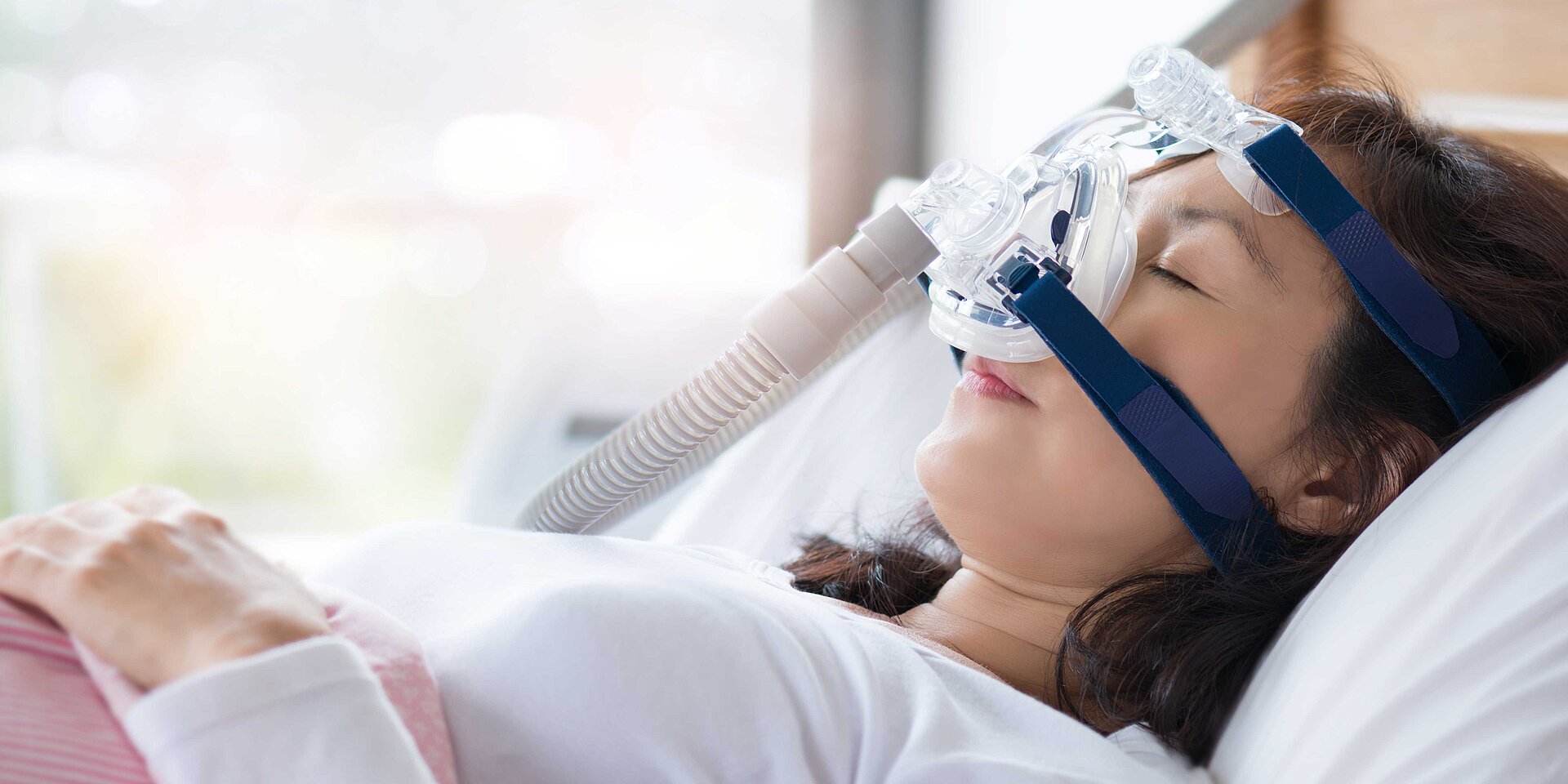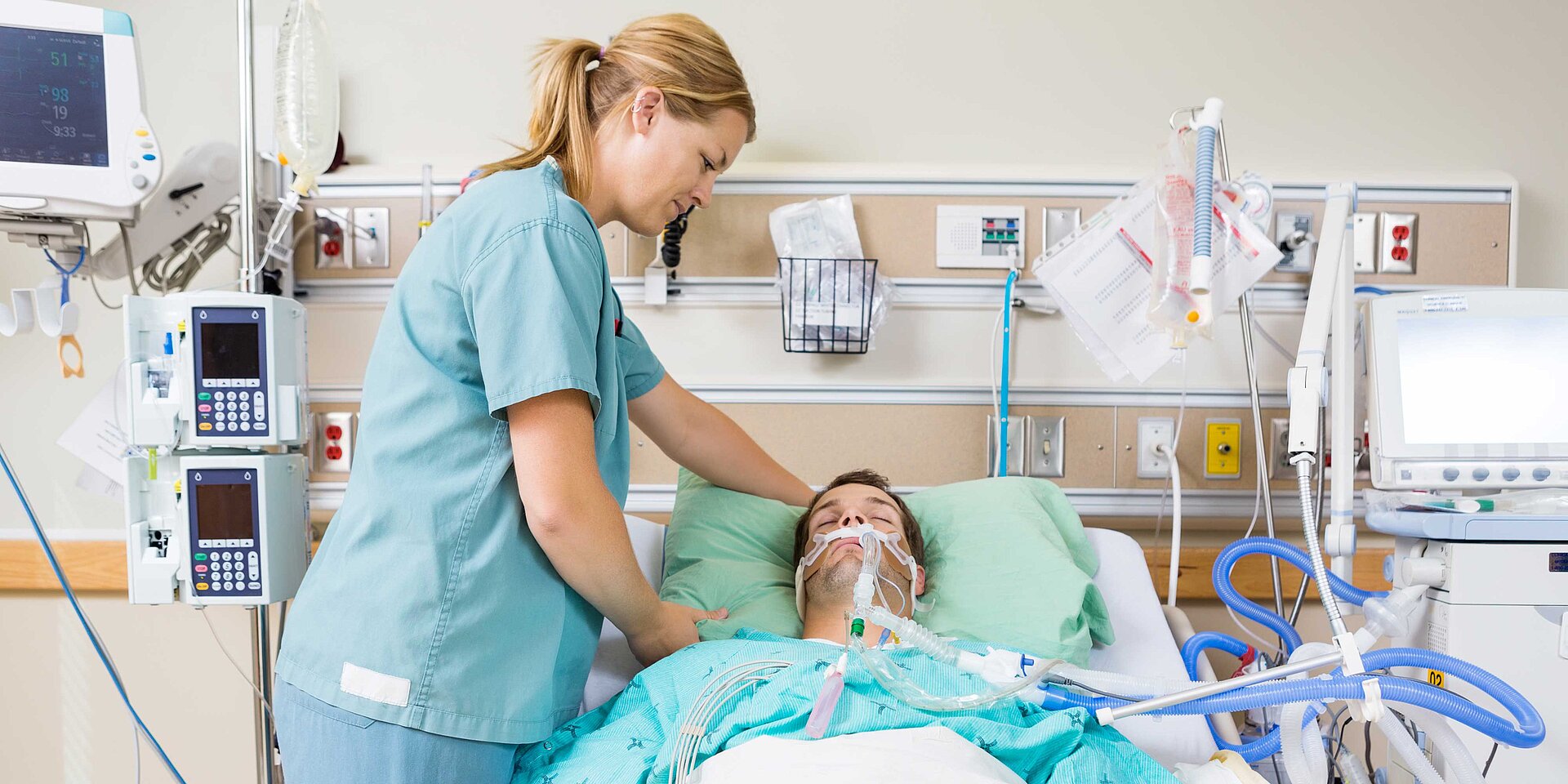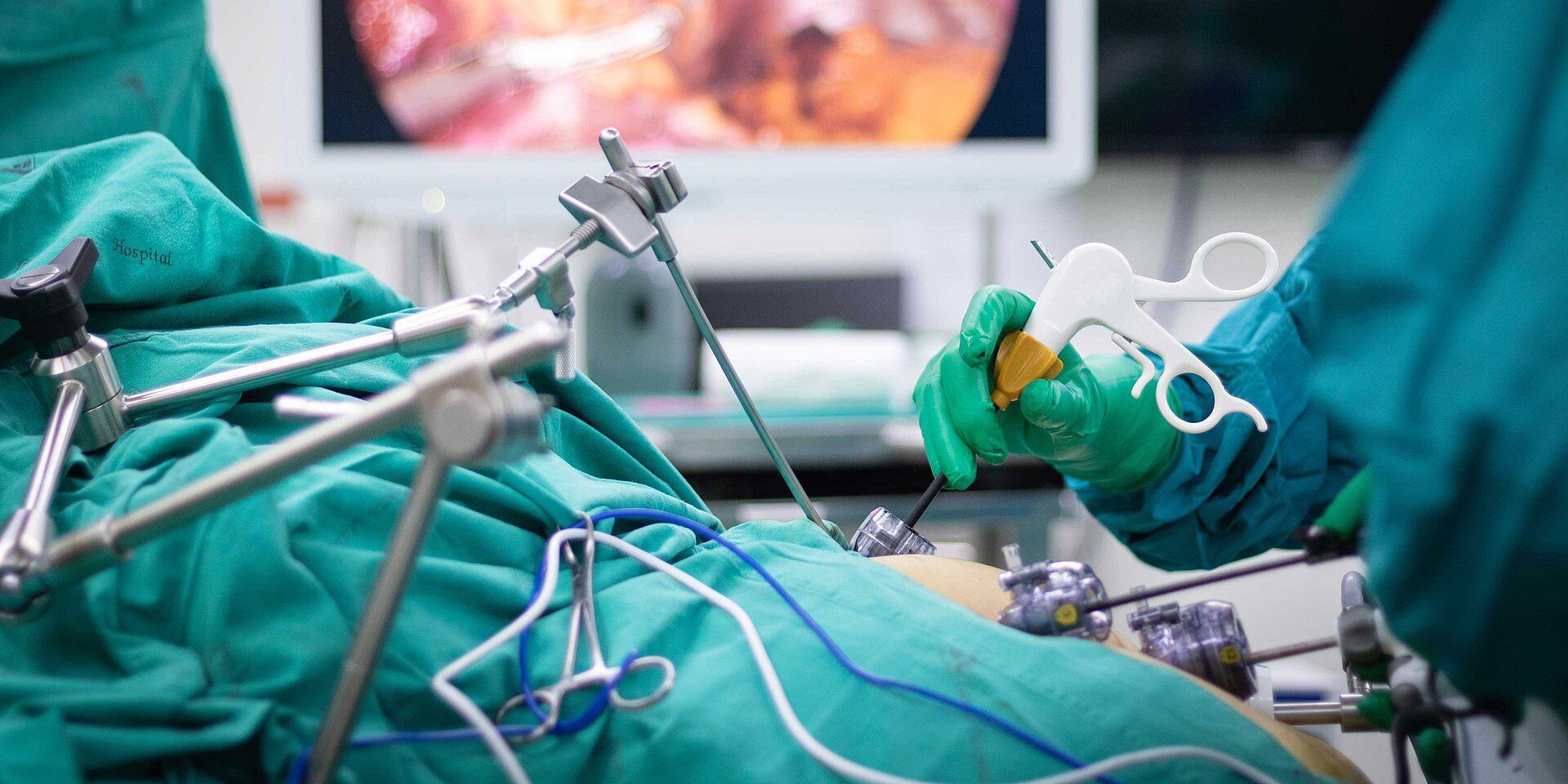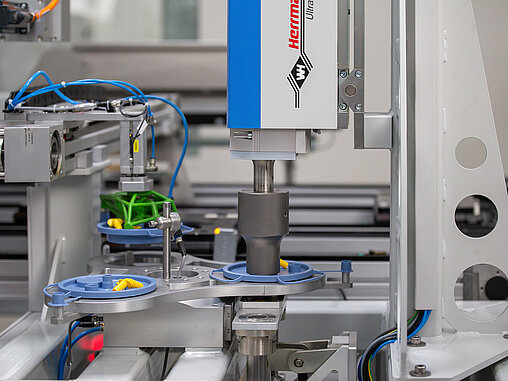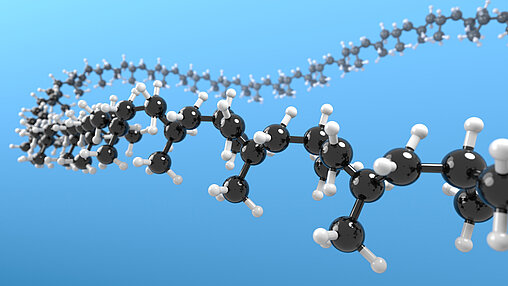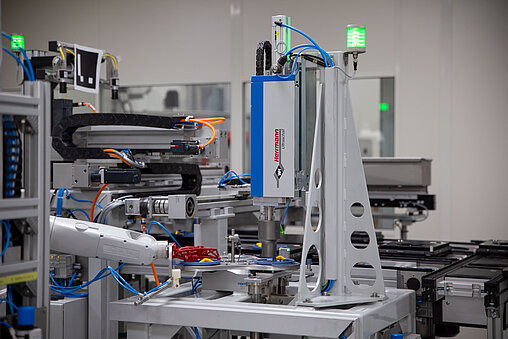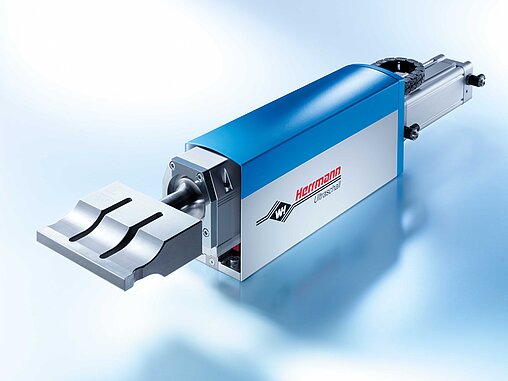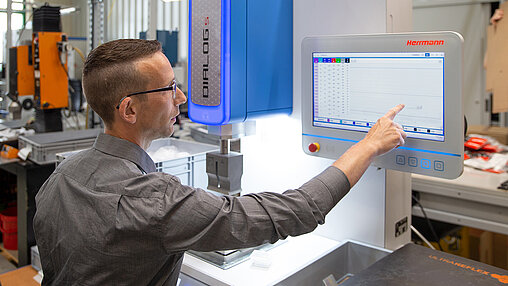Manufacture Medical Devices Quickly and Reliably with Ultrasonic Welding
Precise, fast, smart: With ultrasonic welding as a glue-free joining technology for medical devices, you can increase the quality of your products as well as the efficiency of your production processes. Benefit from:
- Fast, automated connections
- Clean connections without additives or chemicals
- Digital, automated quality control
Learn how you can use these benefits for your medical devices, too!

Get to Know Your Medical Ultrasonic Welding Applications
FAQ – The Most Important Questions and Answers about Welding with Ultrasonics
With ultrasonics, thermoplastic materials can be connected quickly, safely and firmly. You can find an overview of common plastics that can be welded with ultrasonics here.
With over 60 years of experience, we are also happy to consult you on the selection of the right plastic for your medical device.
Ultrasonic welding joins plastics by using high-frequency vibrations to create localized frictional heat at the interface of two parts, causing the plastic to melt and bond. The parts are held under pressure while the vibrations generate heat, and once the plastic cools, a strong, permanent joint forms without the need for adhesives or fasteners.
This process is fast, precise, and clean, making it ideal for the manufacturing of medical devices. Especially products that are worn directly on the body, such as in the areas of diabetes or ostomy care, benefit from connections without chemicals.
Learn more about ultrasonic welding here.
Ultrasonic connections can be found everywhere in the medical sector: for products used in hospitals as well as for products for home use and in laboratories. The most common areas in which ultrasonics is used are:
- Infusion Therapy
- Hemodialysis
- Surgery
- In-vitro diagnostics
- Laboratory
- Respiratory therapy
- Stoma & Ostomy Care
- Drug Delivery Devices
- CPAP Devices
- Continence Care
- Infusion Set
- CGM Systems
- Insulin Pumps
- Pens & Auto injectors
Ultrasonic welding has proven its worth in the medical industry for years. It is used for the manufacturing of a wide variety of applications. The most common include:
- Dialysis filter
- Intermittent Catheter
- Infusion sets, insulin pumps, pen injectors and autoinjectors for diabetes patients
- Continuous positive airway pressure (CPAP) masks and humidifier
- Surgical instruments such as Bipolar Cutting Forceps or Trocars
- Needleless connectors
- Cell Culture flasks and cell factories
- IV catheter
- Closed System Transfer Device (CSTD)
- In-Vitro Diagnostic (IVD) devices
- Medical wearables
- Point of care test cartridges
In our white paper “The most important success factors for component design”, which geometries and materials we can weld with ultrasonics and how your application can benefit from ultrasonics to the maximum.
Ultrasonics is used to connect plastics without additional joining agents and therefore also without chemicals. This is particularly beneficial for wearable medical devices. Because without adhesives, which often contain isobornyl acrylates (IBOA), skin compatibility and wearing comfort are greatly improved.
Hospital care applications benefit above all from hermetic, strong and reliable connections.
Thanks to the gentle joining process, even complex geometries of small, delicate components can be safely connected. The fast process is also ideal for the automated production of applications in large quantities, increasing the output of the production and reducing the costs.
In addition, ultrasonics can also create a strong and safe connection with thermoplastic materials. This makes it possible to switch to more eco-friendly, recycled plastics.
Find out more about the benefits of ultrasonic welding for your specific application in the field of diabetes care, home care or hospital care.
Ultrasonic welding is a widely used and reliable manufacturing process, known for its safety, precision, and speed.
We achieve this by individually defining the right welding parameters for each application in our ultrasonic laboratory. These parameters are saved in the generator of your welding system and can be reliably reproduced for each individual welding process in your manufacturing.
The welding system's intelligent controller software ensures this exact reproduction. It monitors the process and measures up to 150 data records per weld. This not only makes the process safe, but also enables uncomplicated, digital quality control.
In ultrasonic welding, process capability (CpK) ensures that the welding process consistently produces parts within specification limits, while Overall Equipment Effectiveness (OEE) measures the machine's efficiency by evaluating availability, performance, and quality. A high CpK and OEE indicate that the ultrasonic welding process is optimized for minimal variation, high-quality welds, and maximum productivity.
Learn more about the digital process control for medical products here.
Manufacturers benefit from numerous advantages by producing their medical devices with ultrasonic welding. These include:
- Real-time process data monitoring
- Eco-friendly process and low product carbon footprint assembly
- High process stability with minimal reject rates
- Very well suited for high production volumes
- Clean process without additional materials
- Strong and durable connections
- Fast and efficient process
Find out more about the benefits of ultrasonic welding for your specific application in the field of diabetes care, home care or hospital care.
Ultrasonics can be used for various joining processes within an application. The most common types of application include:
- Welding of injection-molded parts
- Embedding of membranes, adhesive tapes, nonwoven materials etc.
- Swaging e.g. a silicone septum, a metal mesh etc.
- Staking of e.g. PCB, metal components etc.
Find out more about the benefits of ultrasonic welding for your specific application in the field of diabetes management, home care or hospital care.
In most of the cases, ultrasonic welding can be a state-of-the-art bonding technology that can replace adhesive, heat or laser welding. Get in touch for an individual consultation:
When medical devices are to be manufactured with ultrasonic welding, the most common requirements we fulfill are:
- Leak tightness (IPxx)
- High strength
- Perfect cosmetics
- Permanent connection
- Robust bond in harsh environmental conditions (temperature stress, sterilization etc.)
Contact us to find out how your application can benefit from ultrasonic welding.
Download Expert Resources
Learn more about the benefits of our technology for your medical product. Our downloads contain the knowledge from over 60 years of ultrasonics, providing valuable insights into advanced assembly techniques. By sharing our technical knowledge with you, we ensure a close partnership on equal terms so that we can realize projects as quickly and successfully as possible.
Download our exclusive resources to unlock decades of innovation and stay ahead in the rapidly evolving medical device industry.
Partner with Us
Contact our Medical Team to discover how our premium solutions can elevate the quality and effectiveness of your large-scale manufacturing of medical devices.

